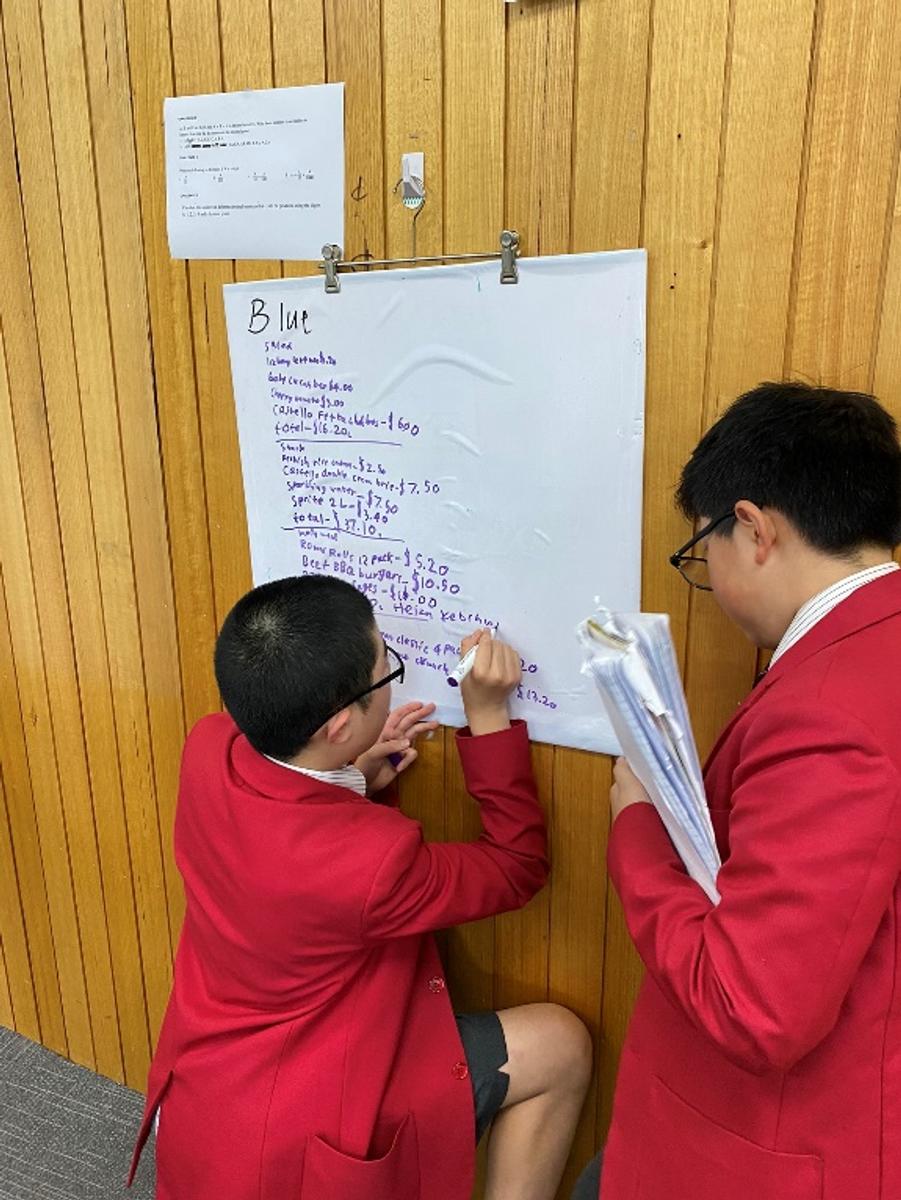Mathematics Yr 7

Getting up and Moving in Maths
Not surprisingly, one of the key conditions for learning is for students to be actively thinking, but how do we ensure that students are doing just that?
Recently in some our maths classes we have been trying out a new teaching strategy that gets everybody up and involved in their learning. Our focus is on working collaboratively to build mathematical understanding and to practice our skills. The techniques used in class are based upon the research of Peter Lillejdahl and his popular book, Building Thinking Classrooms in Mathematics.
After a quick lesson introduction, students are divided into random groups of three, and given a problem-solving task to work on together on ‘vertical non-permanent surfaces’, (aka whiteboards on the walls). It turns out that the ‘vertical’ part of that description is very important. It means that every member of a group can directly face their work and engage with the problem.
The erasable nature of whiteboards means that students can try things out, rub things off and then have another go, as often as they need to. With only one marker per group, and the rule that the person with the marker can only write the suggestions of their team mates, we suddenly have a buzz of mathematical conversation and sharing in the room.
When we finish our collaborative problem solving it’s time for some quick notes and to check our understanding with some individual work back at the desks. These ‘check your understanding questions’ give students the opportunity to embed their learning and can be differentiated to provide plenty of challenge.
We hope you enjoy a little snapshot into the work of 7C and 7D over the last few weeks. They have been very busy.
Nola Cefai Ms Cefai Mathematics

